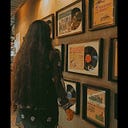From sewing machines to virtual worlds!
Fashion designers’ professions are set to shift dramatically as a result of industry 4.0’s automation. Current fashion designers, both graduates and students, are torn between understanding digital technologies and acquiring the physical abilities required to create a standard fashion garment or collection.
Sketching, pattern cutting, and sewing are physical abilities, but digital tools like CLO3D and Blender are commonly available. The birth of a digital fashion company The Fabricant, Dress X, and RTFKT, a virtual collectibles production company, have rocked the market and established new communities by combining the fashion and gaming worlds in a way that has never been seen before.
Brands like Prada have hosted a virtual runway presentation with lengthy and curiously personal detail shots, J.W Anderson has presented his menswear collection as paper dolls and served nostalgia digitally, and Jeremy Scott of Moschino has presented a full-fledged doll version fashion show. As the disruptive Covid-19 age drives both luxury businesses and individual fashion designers to reconsider the decades-old legacy of traditional fashion formats, physical, phygital, and totally digital tactics are continuously being reimagined. As a result, the metaverse appears to be the digital equivalent of physical barriers.
Here are some ways fashion may make use of this virtual newness to breathe new life into brand identities and creative outputs as they race to explore uncharted territory:
Renew Brand Concepts that are Metaverse-Ready in-Store.
Imagine walking into a virtual shopping mall and being able to deposit money on the table to buy the most fashionable new clothing. Except the money is in the form of cryptocurrency, and the new blouse is a virtual item that may be worn. This might happen in the next 5 years or possibly sooner. Retail shops, like real shopping malls, might benefit from a digital makeover, with limitless AR/VR potential for visual merchandising in-store experiences. The finest brands would make the move from online to offline as easy as possible.
2D to 3D and Immersive Contact with the Press and Media
Let’s reconsider our approach to fashion content consumption. Is it possible for traditional media organisations to transition away from 2D interfaces and toward 3D immersive interactions? Is it still vital to have conventional press organisations like Vogue now that we have influencers and key opinion leaders that are more aligned with Gen Z values? With headlines hitting customers throughout the day, the time it takes from an actual incident to publication has shrunk dramatically. How can launches be created with more interaction to cut through the noise in virtual places for brand narrative, given fashion’s reliance on previews to form desire and ensure demand? Marketing metrics will shift as well, moving away from engaging like-minded online social networks and toward establishing a rationale for brand loyalty via the internet.
E-commerce: One-of-a-Kind and Personalized Shopping Experiences
When it comes to exchanging virtual products, the globe will be their oyster, with The Fabricant, DressX, and RTFKT leading the field in the fashion metaverse. Brands and retailers should have a clear creative vision and plan for achieving e-commerce goals, in addition to picking up new skills rapidly enough to compete in the field. A seller’s website interface should provide consumers with more than simply navigation efficiency and convenience; it should also provide an interesting but distinctive personal experience.
New Waves in Fashion have been Identified, According to Fashion Forecasting
Customers of NFTs are mostly from the gaming, fine art, music, and financial communities until the metaverse becomes popular. Unlike the average customer on the street, buy-in necessitates familiarity with specialized digital networks and resources. Trend forecasting will be approached in a fundamentally different way, and a thorough examination of timeframes and effects will be required. Consumer demographics and behaviours are increasingly separated in newer ways, therefore brands must move outside of their comfort zones. As many actors continue to pursue unexpected paths forward, there are increasing overlaps between industries, which provides for intriguing cooperation.
As the fast-changing fickleness of fashion trends is now accelerated with digital capabilities and flung even further out into prospective innovation zones, what is fresh will soon become obsolete. We’ll keep an eye on this place as we expand!
Get the best products from the business and commercial sectors from eBay alternatives.
